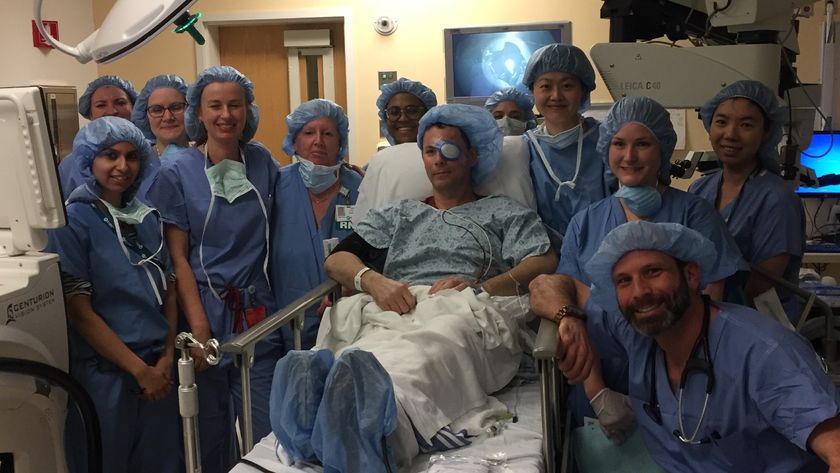
The popularity of butt implants has surged in the last year, according to new data, perhaps spurred by the popularity of the curvaceous reality TV star.
"There are plenty of people that are fascinated by watching Kim Kardashian or Nicki Minaj or some of these women who have larger bottoms, and they strive for that," said Dr. Michael Edwards, the president of the American Society for Aesthetic Plastic Surgery, which collected the data.
Though liposuction, breast augmentation and Botox remain the most popular cosmetic procedures, buttock augmentation has grown dramatically in the last year. In addition, a technique for freezing and killing excess fat tissue has also become more popular, the data suggest. [7 Cosmetic Surgery Myths Revealed]
Most common procedures
In 2014, more than 10 million procedures were performed by board-certified plastic surgeons, according to the data. The most popular surgical procedure was liposuction, a method of removing fat from the body, followed by breast augmentation, Edwards said.
Liposuction is a surgical procedure that requires a fairly long recovery process. Although the most typical side effects are bruising, swelling and baggy skin around the affected area, the procedure can sometimes damage nerves and skin permanently. In the worst cases, the procedure can become deadly if fat or blood clots travel from the affected region into the lungs.
The most popular nonsurgical procedure remains Botox, followed by procedures that use fillers to plump up the face and lips, such as Juvederm. Botox is very safe, with a low risk of temporary side effects such as drooping eyelids, according to a 2014 study in the journal JAMA Dermatology. Fillers also have a low risk of side effects such as lumpiness and beading, according to the study.
Sign up for the Live Science daily newsletter now
Get the world’s most fascinating discoveries delivered straight to your inbox.
Coming up from behind
But buttock augmentation — which can involve either grafting fat onto the buttocks from elsewhere in the body, or silicone implants that are placed over the buttock muscles — has surged a dramatic 86 percent since 2013. Although the procedure is generally safe, it's important that a trained, board-certified professional performs the operation, because the procedure does have some risks, Edwards said.
For instance, silicone implants must be placed correctly or they may migrate out of place. Serious complications can happen when material from fat grafts or silicone injections cause infections, with potentially deadly consequences, Edwards said. A woman who called herself the "Michelangelo of butt injections," recently went on trial for murder because prosecutors allege she injected a client, who later died, with industrial-grade silicone used to lubricate car engines, according to website of the Philadelphia Inquirer.
Fat removal
Nonsurgical fat removal, typically done by applying a cold device to a person's belly, thighs or love handles to kill fat cells, has increased by 43 percent since 2013, according to the data. The idea behind the treatment is once the fat cells freeze, they split open and the body reabsorbs them.
The most common side effect is simply not being happy with how it looks afterwards. (A technique using lasers to bust fat cells is also available, but is less popular because it is more uncomfortable, Edwards said.)
The procedure doesn't work for large amounts of fat, which are typically better dealt with by liposuction, Edwards said. "It's not meant for weight loss, it's meant for contour changes," he told Live Science.
Follow Tia Ghose on Twitter and Google+. Follow Live Science @livescience, Facebook & Google+. Originally published on Live Science.

Tia is the managing editor and was previously a senior writer for Live Science. Her work has appeared in Scientific American, Wired.com and other outlets. She holds a master's degree in bioengineering from the University of Washington, a graduate certificate in science writing from UC Santa Cruz and a bachelor's degree in mechanical engineering from the University of Texas at Austin. Tia was part of a team at the Milwaukee Journal Sentinel that published the Empty Cradles series on preterm births, which won multiple awards, including the 2012 Casey Medal for Meritorious Journalism.











